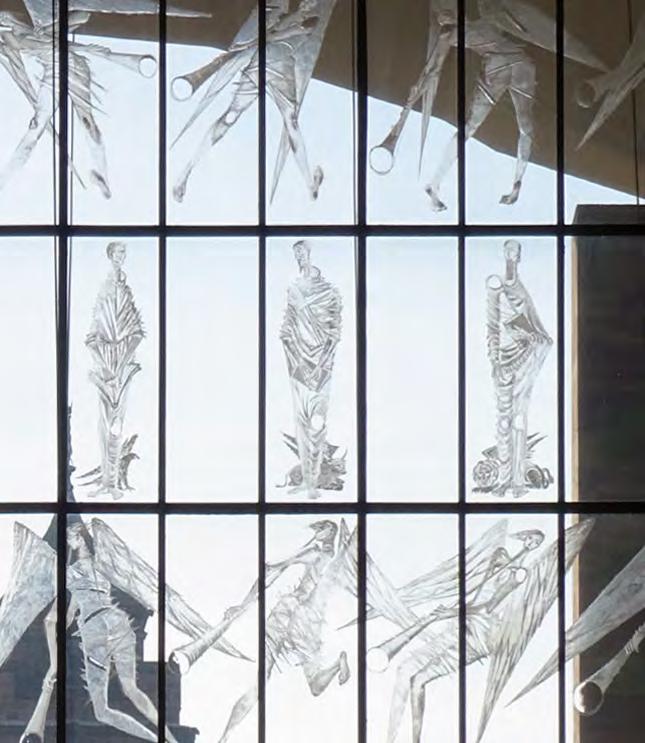CONSERVATION FRAMEWORK
5.3.5 NEW CATHEDRAL See also:
HERITAGE CONSIDERATIONS
VULNERABILITIES AND CONFLICTS
The uniqueness of the new cathedral building lies in its architectural form, which juxtaposes tradition and innovation in one place by fusing Post-War Modernism with the traditional liturgical form and materials. As a principle, this unique character should be preserved.
As a single-phase building with a clear design intent, the new cathedral is vulnerable to inappropriate additions or removals that have a substantial impact on its heritage significance. Minor or cumulative changes and large additions may both have an equally negative impact. This does not mean that the new cathedral should remain static, but change will need to be carried out thoughtfully and sensitively. The resources required to create appropriate and high-quality change must be factored into any decision-making process.
5.3.4
Ruined cathedral
5.3.6
Repair, maintenance and conservation
5.3.7
Restoration and new works
The building has tangible and intangible qualities which must be retained or enhanced, regardless of the nature of change proposed:
5.3.8
Operations, management and use
•
Spence’s design vision which reflects post war architectural thinking should be preserved.
5.3.9
Visitor facilities and access •
The new cathedral must remain an active place of worship.
•
The message of international reconciliation must be preserved.
Understanding the intent of the original designers and patrons is vital to our ability to preserve and enhance the building in line with good conservation practice. As a single-phase structure, this intent remains clearly visible and intact. To preserve the sense of place embodied within the building, even small additions or minor repairs will need to be carefully considered due to cumulative or unintended impacts. Equally, a substantial addition or change that embodies the original design intent could be acceptable within the new cathedral, providing it improves function or enhances the existing architecture. A key principle will be to ensure all change is high-quality, sensitive and well-designed to conserve the new cathedral’s significance.
118
As an example, the new cathedral has an issue with access due to the use of single or shallow steps internally. These are a vital part of Spence’s vision, but they are detrimental to inclusive access. Provision of appropriate access without interfering with Spence’s design intent will be difficult and may require technological solutions such retracting steps and concealed scissor lifts. There are several areas where new facilities are needed, including WCs for visitors, and a goods lift for staff and volunteers. These will need careful placement so they aren’t detrimental to the Cathedral’s significance. Lighting in the new cathedral should be reconsidered as it is currently poorly designed. The lighting rigs cast shadows which detracts from the simplicity and readability of the space. The current lighting scheme is not effective, and staff are not trained in its use. Operationally, the new cathedral suffers from inconsistent and inefficient heating, poor acoustics and declining fabric.














